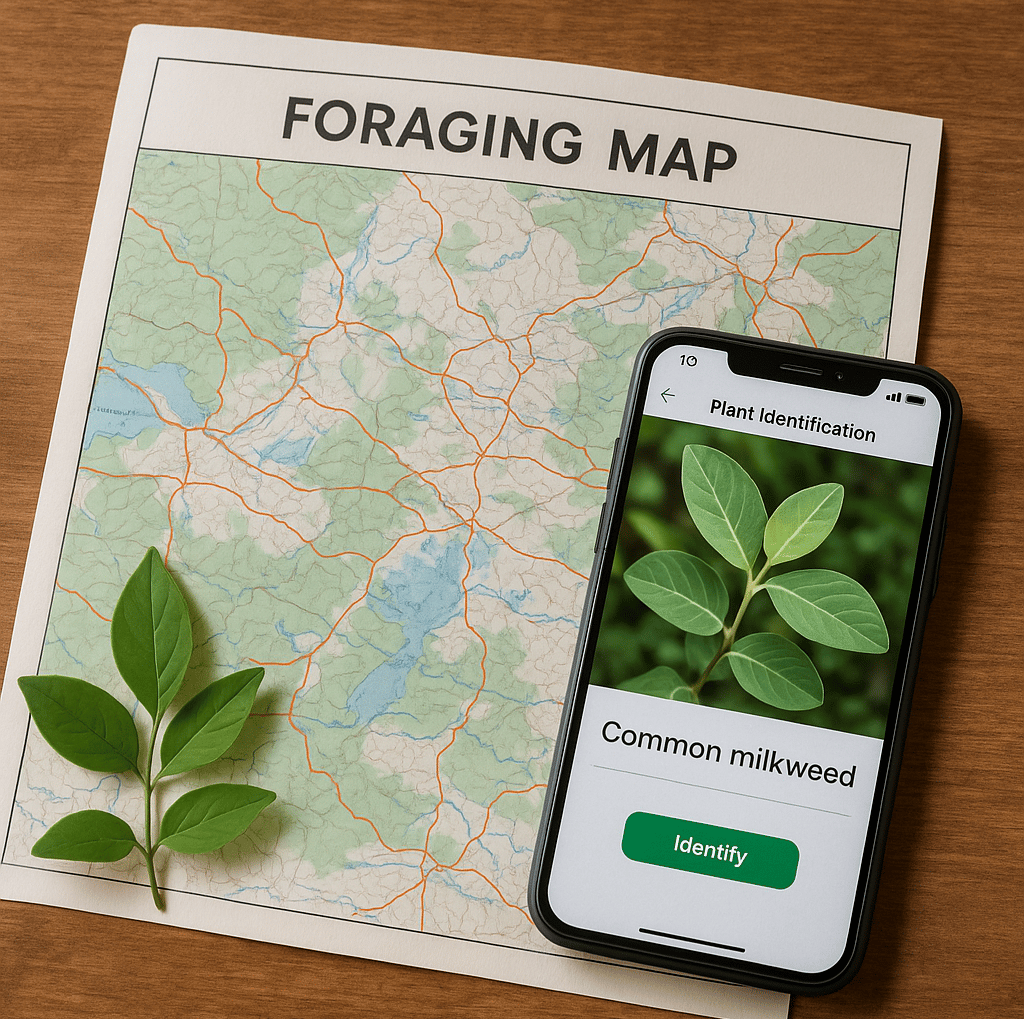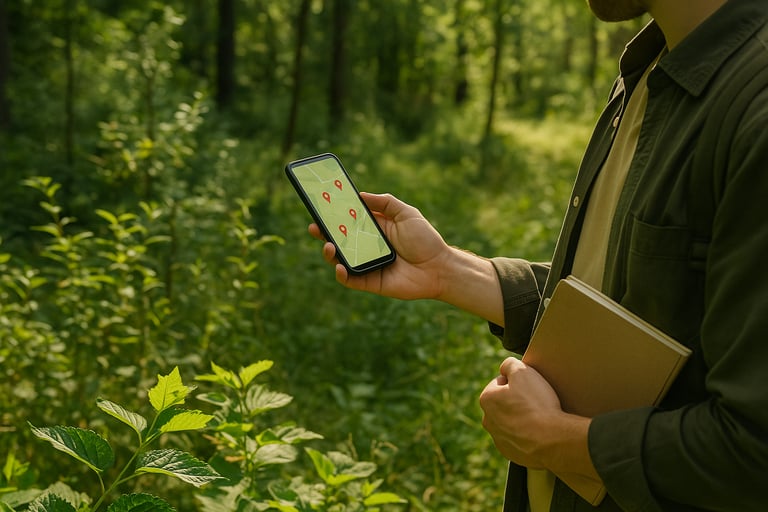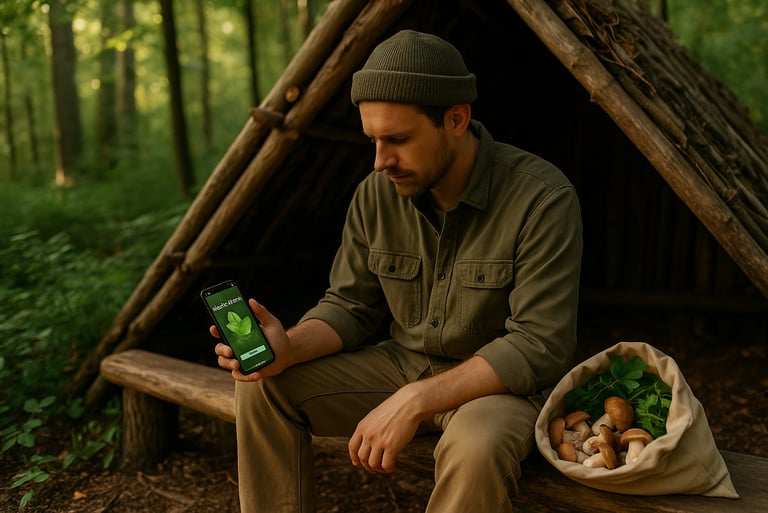How to Use Foraging Maps and Plant ID Apps for Safe Wild Edible Discovery
Learn how to use foraging maps and plant identification apps to safely find wild edible plants. This beginner's guide explains how to locate, identify, and track wild foods using digital tools for smarter, safer foraging.


How to Use Foraging Maps and Plant ID Apps for Safe Wild Edible Discovery
Why Digital Foraging Tools Are Game-Changers
Foraging used to require relying solely on memory, field guides, and hands-on experience. And while those are still valuable, today’s digital tools can make the process faster, safer, and much more beginner friendly.
Whether you're looking for wild edible plants, mushrooms, or berries, tools like foraging maps and plant ID apps can help you locate species-rich areas and confirm what you've found in the field. They’re not perfect replacements for knowledge, but they’re incredibly useful for learning and building confidence.
Want to start from the basics? Check out Foraging Basics: How to Start Safely and Responsibly.
Understanding how to use these tools properly is key. Let’s break down how to get the most out of foraging maps and plant identification apps so you can safely enjoy wild harvesting.
What Are Foraging Maps and How Do They Work?
A foraging map is a digital or physical map that marks the locations of wild edible plants or fungi. Some are community-driven, where users share their discoveries, while others are more personal and private, allowing you to log your own finds.
Websites like FallingFruit.org offer large, public maps of fruit trees and edible plants in urban and natural areas. Other platforms like iNaturalist allow you to explore plant sightings based on location and time of year. You can filter by edible species or plant type and use GPS to navigate to those areas when you're in the field.
Creating your own map is also a great habit. Use Google Maps or a dedicated note-taking app to mark productive foraging spots. That way, you can return when the season is right.
Getting the Most Out of Plant ID Apps
Plant identification apps use your phone’s camera and a database of botanical images to identify plants on the spot. You simply snap a photo of a leaf, flower, or fruit, and the app gives you potential matches.
Some of the most popular plant ID apps for foraging include PictureThis, PlantNet, Seek by iNaturalist, and iNaturalist itself. These apps are especially useful when you’re just starting out and learning the characteristics of different plants.
That said, they’re not always 100% accurate. Lighting, angles, and plant similarities can lead to misidentifications, so it’s important to use these apps as a learning tool, not the final word. Always cross-check your findings with other sources, like a field guide or online foraging community. Also read How to Identify Poisonous Plants in the Wild to avoid dangerous mistakes.
Apps that offer community input — where experts can verify your photos — tend to be more reliable. Logging your finds over time will also help you remember which plants grow where, and during which months.
Combining Apps and Observation for Safe Foraging
The most successful foragers use a mix of tech and old fashioned observation. You can use a plant ID app to narrow down what a plant might be, then compare the features — like leaf shape, stem structure, or growing environment — to what a guidebook says.
Use your foraging map to mark locations where you’ve found edible plants, and note when they were ready for harvest. This pairs well with tracking seasonal growth — see the Seasonal Foraging Guide: What Wild Foods to Harvest Year-Round. Over time, you’ll build a detailed seasonal map of wild foods in your area, customized to your needs.
This combination of digital tools and real world experience will help you grow more confident, and more accurate, with every outing.
Final Thoughts on Digital Tools for Modern Foraging
Using foraging maps and plant identification apps is a smart way to accelerate your learning and stay safer when exploring wild foods. These tools give you the confidence to begin foraging even if you’re new, and they can help you track your progress as your skills grow.
Just remember: no app is perfect. The best way to forage safely is to treat technology as a helper, not a replacement for hands-on observation, pattern recognition, and continuous learning. By combining tech with your own growing knowledge, you'll be able to forage with more precision, build a deeper connection to the land, and enjoy the wild food world with confidence.




© 2025. All rights reserved About | Privacy Policy | Terms and Conditions | Affiliate Disclosure | Disclaimer


